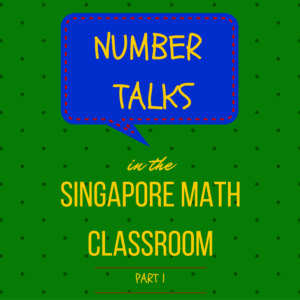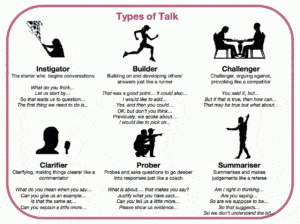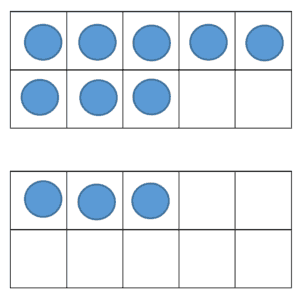 Mental math plays a huge role in the Singapore Math curriculum. By developing mental math strategies in your students, you are equipping them with strong number sense, a critical skill and goal for our students to reach by the end of middle school.
Mental math plays a huge role in the Singapore Math curriculum. By developing mental math strategies in your students, you are equipping them with strong number sense, a critical skill and goal for our students to reach by the end of middle school.
You can practice mental math in your classrooms with a Number Talk; a term coined by Sherry Parrish in her popular book, Number Talks: Helping Children Build Mental Math and Computation Strategies.
Establishing Rules and Roles for a Number Talk
For Number Talks to be successful, you have to establish some rules for respectful listening and productive criticism. All students need to feel safe to participate without feeling ridiculed.
Enlisting student help when generating rules allows students to take ownership of them and creates a classroom where the rules are more likely to be followed.
To generate rules for Number Talks you might ask:
What does it look and sound like when someone is being a good listener?
It’s equally important to teach students how to respond to each other in a respectful manner. In a recent post on Edutopia, Oracy in the Classroom, types of talk were artfully organized into 6 discussion roles.

During a Number Talk, students become the Builders, Challengers and Clarifiers, while the teacher plays the roles of the Instigator, Prober, and Summariser as he or she guides the discussion as the facilitator of the Number Talk.
What should we talk about?
In Kindergarten, Number Talks can focus on subitizing and connecting the pictorial to the abstract.
Thoughtful problems are used in grades 1 through 5, designed specifically to practice mental math strategies that have been introduced in class.
In Kindergarten, show an image like this and ask, “How many dots do you see?”

In first grade, show an image like this.

Or a problem like this to practice addition strategies.
18 + 5 =
In second grade, start with a problem like this to practice addition strategies.
57 + 14 =
Or this, to practice adding a number close to 100.
97 + 33
Or this, to practice subtraction strategies.
43 – 28 =
In third grade, start with this to practice mental math with multiplication.
14 x 3 =
Or this to practice mental division.
42 ÷ 3 =
In fourth grade, start with problems like these to build on strategies learned in the previous grades.
499 + 137 =
138 – 56 =
In fifth grade, start with problems like these to continue to build on strategies learned in the previous grades.
1388 + 2983 =
29 x 7 =
135 ÷ 5 =
Give some of these a try and check back soon for the next installment of Number Talks in the Singapore Math Classroom.




















Hi,
I am trying to contact Cassie but have had no luck, so I will try this. I read somewhere information regarding how you score bar model problems–specific things you look for when checking their work. Can you send me that information? Judith Hall
Hi, Judith! I work with Cassy and I’d be happy to help you find what you are looking for. You can email me directly at beth@mathchampions.com